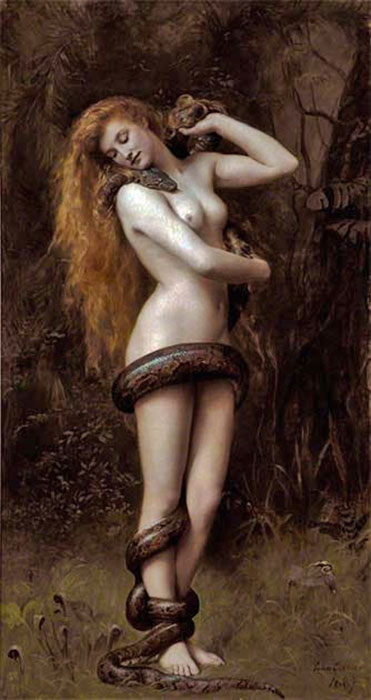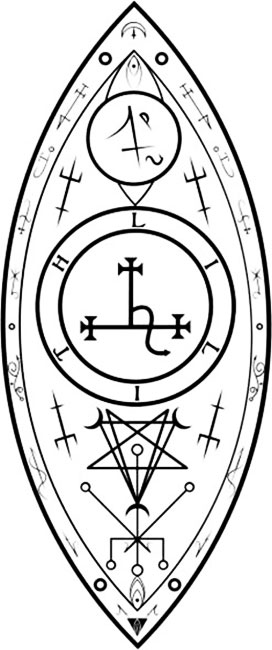|
by Robbie Mitchell from HistoricMysteries Website
Competing biblical traditions have Lilith either as some sort of demon, or as the first wife of Adam.
Source: AltPix
/ Adobe Stock.
Lilith, the woman who is said by some to have preceded Eve as Adam's spouse may not be a name familiar to all.
But her presence in ancient texts and folklore
has left an indelible mark on discussions surrounding the Garden
of Eden, creation, and the early days of humanity.
This is the story of the woman who defied convention long before Eve stepped into the picture.
In some interpretations of ancient Hebrew texts,
she is portrayed as the first woman, created on equal footing with
Adam from the same earthly clay.
Unlike Eve, in most portrayals, Lilith exudes an aura of independence and self-determination.
This connection with darkness and the unknown has added to Lilith's mystique over the years.
This association with darkness, combined with her strong-willed and assertive personality (refusing to comply with Adam's authority in the Garden of Eden...) has led some scholars to lend negative connotations to Lilith over the years.
for generations of artists. (John Collier / Public Domain)
However, one thing tends to remain consistent, her defiance and refusal to conform to the traditional role of a subservient wife.
Lilith's presence in the Garden of Eden story is not part of the mainstream biblical narrative but largely emerges from Jewish folklore and texts.
As we've already covered, Lilith's character is usually defined by her refusal to bow down to Adam and her lack of subservience as a wife.
According to some versions of the story, Lilith's defiance led to her expulsion from Eden, while in others she left willingly.
Lilith's origins can be traced back to a patchwork of mythologies and ancient texts, primarily within Jewish folklore.
While not found in the canonical Hebrew Bible,
her story began to take shape in various texts, including the
"Alphabet of Ben Sira" and the "Zohar," both of which were written
in different periods of Jewish history.
However, their marriage is fraught with conflict
due to Lilith's unwillingness to be subservient to Adam. Her
eventual departure from the Garden of Eden marks the start of her
journey as a figure of independence and defiance.
Medieval scholars and storytellers often used the
Zohar to paint Lilith as
a kind of demon.
Lilith's mythos has also left a mark on popular culture, from literature to art and even modern feminist interpretations.
Her story continues to resonate, serving as a
symbol of rebellion against traditional gender roles and societal
expectations.
What Happened
to Her?
The 13th-century writings of Isaac ben Jacob ha-Cohen (a Talmudist and Hebrew legal scholar) had Lilith coupling with the archangel Samael, the accuser, adversary, and destroyer of Talmudic and post-Talmudic biblical lore.
This darker portrayal of Lilith as a demoness reflects her defiance against traditional gender roles and societal norms.
Some medieval scholars used Jacob's writings to explain that the offspring of Lilith and Samael were the demons and monsters that so many worshippers feared.
known as the Ars Goetia had no doubt that Lilith has demonic. Here is her seal.
(Ahohlan / CC
BY-SA 4.0)
She is seen by some as a symbol of feminine
independence and empowerment, choosing freedom over subservience.
Some feminist interpretations even celebrate her as a figure who
stood up for her rights and refused to be dominated by Adam.
This positive aspect of her character contrasts with the more sinister depictions in other mythologies.
While not a part of the traditional biblical
account of the Garden of Eden, Lilith's story has endured
through the ages, evolving to reflect changing cultural and societal
values.
However,
Her story invites us to delve into the
complexities of human relationships, power dynamics, and the
enduring allure of the forbidden.
References
|




